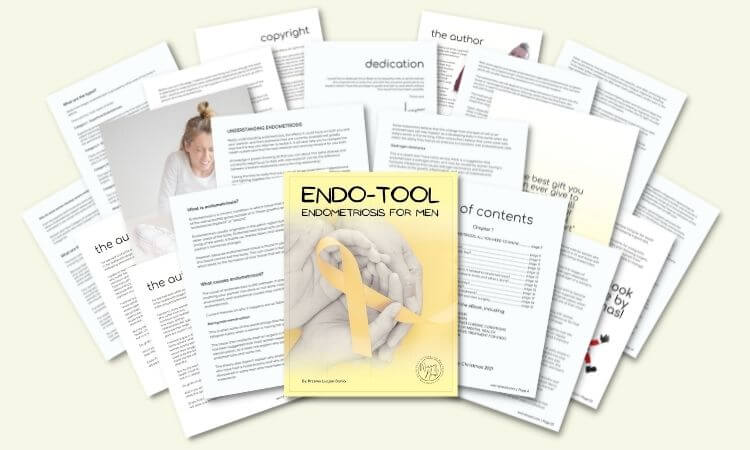What type of condition is endometriosis considered?
There is some debate as to what type of condition endometriosis is considered. Some experts believe that it is an autoimmune disease, while others believe it is an inflammatory disease. So, what type of condition is endometriosis considered?
The majority of experts agree that endometriosis is a chronic condition that can cause a great deal of pain and suffering for those who suffer from it. There is no cure for endometriosis, but there are treatments available that can help manage the symptoms and improve the quality of life for sufferers.
To answer what type of condition is endometriosis, it is commonly classified as a chronic inflammatory disease because endometriosis is characterized by the presence of inflammation in the tissues and organs where it is present. This inflammation can cause pain, scarring, and other problems.
Endometriosis explained…
In order to get more insight on what type of condition is endometriosis considered, I explain for those who don’t know:
- What endometriosis is?
- What are the symptoms?
- How is it diagnosed?
- How is it treated and managed?
If you really want to learn everything about endometriosis, I wrote an “Endo-Tool, Endometriosis for Men” e-Book of which you can get a FREE 1st chapter containing all you need to know about this chronic condition, plus how to cope and support your partner.
The freebie includes the following:
- What is endometriosis?
- What are the symptoms?
- What causes endometriosis?
- What does endometriosis look like?
- What are the stages?
- What are the types?
- What is adenomyosis and how is it related to endometriosis?
- Why do some women develop severe endo and others don’t?
- Does endometriosis cause infertility?
- How is endometriosis diagnosed?
- Do types and stages affect the treatment?
- Recurrence of endometriosis after excision surgery.
FREE Chapter of “Endo-Tool”
Endometriosis e-Book for Men

What is endometriosis?
Endometriosis is a chronic condition that occurs when the tissue that is similar to the one that lines the uterus (endometrium) grows outside of the uterus. Endometriosis most commonly affects the ovaries, fallopian tubes, and the tissue lining the pelvis. However, in rare cases, it has been known to affect other parts of the body such as the lungs, brain, and even the eyes.
What are the symptoms?
The symptoms of endometriosis can vary from woman to woman and range from mild to severe. The most common symptom is pelvic pain, which is often worse during menstruation. Other symptoms can include:
- Pain during sex
- Painful bowel movements or urination
- Excessive bleeding during menstruation
- Infertility
- Fatigue
How is it diagnosed?
A diagnosis of endometriosis is usually made based on the symptoms that a woman is experiencing. However, there are a number of tests and procedures that can be used to confirm the diagnosis. These include:
Pelvic exam: A pelvic exam can be used to check for pain, tenderness, or masses in the pelvis.
Ultrasound: An ultrasound can be used to create an image of the pelvic organs and look for any abnormal growths.
Laparoscopy: This is a surgical procedure in which a small camera is inserted into the pelvis through a small incision in the abdomen. This allows the doctor to directly view any endometrial tissue that may be present.
How is it treated and managed?
The treatment and management of endometriosis will vary depending on the severity of the condition. In some cases, no treatment may be necessary. However, for women who are experiencing severe symptoms or pain, there are a number of options available. These include:
Medications: There are a number of medications that can be used to manage the pain and other symptoms associated with endometriosis. These include over-the-counter pain relievers, hormonal birth control, and, in some cases, prescription pain medications.
Surgery: Surgery is sometimes necessary to remove endometrial tissue that is causing pain or other problems. In some cases, a hysterectomy (removal of the uterus) may be recommended.

What type of condition is endometriosis considered?
From the autoimmunity point of view, endometriosis is considered an autoimmune disease because it is caused by the body attacking itself. The theory is that the body mistakes the endometrial tissue for a foreign invader and starts to attack it. This results in inflammation and pain.
From the inflammation point of view, endometriosis is considered an inflammatory disease because it is characterized by the presence of inflammation in the tissues and organs where it is present.
When endometriosis lesions are present in places outside the uterus, they break down and bleed just like the tissue inside the uterus. This can cause inflammation, pain, and scarring.
Inflammation is the body’s response to injury or infection. It is a natural process that helps the body heal and protects itself from further damage. Inflammation can be acute or chronic.
Acute inflammation is a short-term response to an injury or infection and is typically mild. Chronic inflammation that occurs with endometriosis being present is not a long-term response to an injury or infection but is a response to the presence of endometriosis lesions.
What is the difference between autoimmune and inflammatory diseases?
Is endometriosis an autoimmune disease, inflammatory, or else?
Autoimmune diseases are caused when the body’s immune system mistakes healthy cells for harmful invaders and attacks them. This can cause a wide range of symptoms, depending on the particular disease.
Inflammatory diseases, on the other hand, are characterized by inflammation in the body tissues. This can be caused by infection, injury, or another type of trigger.
So, is endometriosis an autoimmune disease or an inflammatory disease?
While it is classified as an inflammatory disease, some experts believe that it may also have autoimmune components. More research is needed to determine what role, if any, the immune system plays in endometriosis.
And there is more – endometriosis is also considered a genetic disease…
Is endometriosis considered genetic?
Endometriosis is a condition that affects approximately 10% of women of childbearing age. It is characterized by the presence of endometrial-like tissue outside of the uterus, which can cause pain, inflammation, and scarring.
It is thought to have a genetic component. This means that it tends to run in families, and women who have a close relative with endometriosis are more likely to develop the condition themselves.
The gene involved is called NSPR1. It is found on chromosome 8. NSPR1 is short for Non-Specific Protein Receptor 1. Mutations in the NSPR1 gene have been associated with endometriosis. These mutations lead to a change in the structure of the protein, which may alter its function.
It is not clear how these changes contribute to the development of endometriosis. However, it is thought that they may play a role in the abnormal growth of endometrial-like tissue outside of the uterus.
Estrogen plays a role in endometriosis…
Estrogen is a hormone that helps to regulate the menstrual cycle. It is thought that estrogen may play a role in the development of endometriosis.
Some studies have found that women with endometriosis have higher levels of estrogen in their bodies. This may be due to a number of factors, including an imbalance in the ratio of estrogen to progesterone, or a problem with the way that the body breaks down and metabolizes estrogen.
It is not clear how estrogen contributes to the development of endometriosis. However, it is thought that it may promote the growth of endometrial-like tissue outside of the uterus.
Final thoughts!
Let’s wrap things done. Is endometriosis considered an inflammatory disease or is endometriosis considered an autoimmune disease?
It’s complicated.
This source says that it is not autoimmune, however, others think that it is…
The short answer is that it is classified as an inflammatory disease, but some experts believe that it may have autoimmune components.
More research is needed to determine what role, if any, the immune system plays in endometriosis. Additionally, endometriosis is considered a genetic disease because it tends to run in families.
The gene involved is called NSPR1, and mutations in the NSPR1 gene have been associated with endometriosis. Finally, estrogen plays a role in endometriosis and is thought to promote the growth of endometrial-like tissue outside of the uterus.
I hope you found this information helpful! Please feel free to ask any questions in the comments section below.
FREE Chapter of “Endo-Tool”
Endometriosis e-Book for Men



About Me
Hi, I’m Lucjan! The reason why I decided to create this blog was my beautiful wife, who experienced a lot of pain in life, but also the lack of information about endometriosis and fibromyalgia for men…
